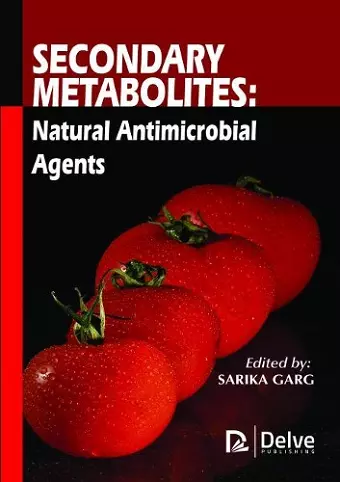Secondary Metabolites
Natural Antimicrobial Agents
Format:Hardback
Publisher:Arcler Education Inc
Published:28th Feb '18
Should be back in stock very soon

Metabolites are the molecules produced by plants. They have various functions and are categorized into primary metabolites and secondary metabolites. Primary metabolites, often referred to as central metabolites, are the key components involved in growth, development and reproduction of the organism. On the other hand, secondary metabolites are the organic compounds that are commonly generated through the modification of primary metabolite involving number of biochemical reactions. The research studies on secondary metabolites have increased over the years. These metabolites play a significant role in the adaptation of plants to their environment and are also considered as vital source of active pharmaceuticals. Secondary metabolites are not directly involved in primary functions viz. growth, development and reproduction. These secondary metabolites are a diverse group, many of which are significant in industrial microbiology. These compounds exhibit several biological activities including antimicrobial, antifungal, anticancer and anti-inflammatory activities. They have a role as antioxidants, antibiotics, flavorings, metal transporting agents, differentiation effectors, etc. They are also involved in ecology and plant defense mechanism. Their protective value is exhibited by their negative impacts on organisms such as herbivores and pathogens. However, some secondary metabolites can also have severe consequences.
Various secondary metabolites are produced by plant cells for defense mechanisms against bacteria. The substances viz. alkaloids, flavonoids, tannins, terpenes, quinones and certain resins are categorized as secondary metabolites. This book mainly discusses the antimicrobial property of different secondary metabolites and is a collection of few recent research studies on secondary metabolites by various scientists. The first chapter is the introduction chapter discussing various secondary metabolites and their functions. Chapter 2 highlights the antibacterial properties of alkaloid extracts from Callistemon citrinus and Vernonia adoensis against Staphylococcus aureus and Pseudomonas aeruginosa. In chapter 3, the antibacterial activity of the alkaloid extract from the leaves of Croton bonplandianum Baill. against Staphylococcus aureus, Escherichia coli, Klebsiella pneumoniae and Pseudomonas aeruginosa is described. The antimicrobial activity of the pure alkaloids of Z. rhoifolium and of the marine alkaloids is evaluated in the following two chapters, respectively. The antimicrobial activity of the quinoline derivatives is discussed in chapter 6. Chapter 7 comprises of the evaluation of the antimicrobial and other properties of the novel quinine isolated from Aegle marmelos (Linn.) Correa. The antimicrobial effects of the catechins...
ISBN: 9781773611204
Dimensions: unknown
Weight: unknown
275 pages